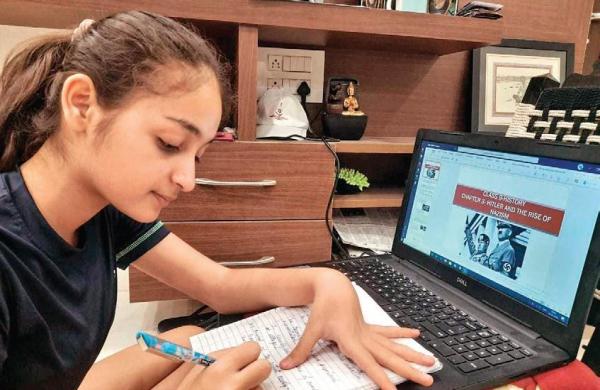Participation equals engagement, not mere attendance
Whether joining a synchronous chat or logging in and dealing through the course material at their own pace, the baseline expectation is that students are going to be present in some manner for sophistication.
But participation implies quite a mere presence. Participation means being a lively part of the lifetime of the classroom—asking questions, interacting with peers, contributing substantive thoughts during class discussions, and more.
Here are four strategies to extend participation within the virtual classroom setting.
1. Build deep, sustained, trusting relationships.
No matter whether you’re during a virtual classroom full-time, or part-time as a part of a Hybrid Education model, there’s always a temptation to urge distracted by the technology itself: video conferencing, discussion tools, learning modules, screencasts, and more.
Don’t get distracted from the foremost important aspect of any classroom—building the strongest relationships possible together with your students.
Participation within the virtual classroom will only increase when students feel welcomed, accepted, encouraged, and supported as full partners in learning.
Consider setting the tone by having students create a post in your learning management system (LMS) during which they mention who they’re and one thing they might most wish to learn within the class.
Require peers to reply to a minimum of two of their classmates. Provide sample starter comments for the responses, such as: “It’s really cool that you simply like to…” and “I also want to find out about…” to assist students to learn to reply to at least one another in appropriate ways.
Your virtual classroom culture is everything. Base it on strong, trusting relationships, and therefore the groundwork is laid for college kids to meaningfully participate for the whole year.
2. Create high-interest discussion topics.
Chances are that a number of the teachers you remember the foremost were those who always appeared to engage the category during a stimulating, high-level discussion or debate.
You’ll probably remember days when class time appeared to fly by because the rear and forth discussion within the class felt so interesting and important.
Engaging, organic discussions are still one of the simplest ways to extend participation in any classroom, but especially within the context of the virtual environment.
Great virtual classroom discussions can occur during a live, synchronous format, for instance, the teacher might simply use videoconferencing software linked to the training management system platform to conduct a live discussion, calling on students as they normally would in an in-person classroom experience.
Taking it up a notch, an educator might introduce a high-interest prompt and let students use a cloud-based tool, like a document, brainstorming board, or mind-mapping app to urge as many thoughts out as possible before engaging the category during a more formal conversation around those thoughts.
Asynchronous discussions require a touch more planning and forethought but are often even as powerful since they bake in additional time for college kids to think and respond at their own pace.
Lay the bottom rules early. Set a time and length for both the initial post also as for responses. Will students cite sources formally or, during a more 21st century-oriented method, hyperlink?
Decide when and the way often you because the course instructor will interject your own thoughts and inquiries to stimulate further discussion.
Build a classroom culture of respectful discourse in line together with your digital citizenship goals.
Whether synchronous or asynchronous, once you use tech to interact and serve the larger purpose of facilitating the discussion, not just to use technology for technology’s sake, that’s when discussions within the virtual classroom can really begin.
3. Create authentic, project-based learning experiences.
Students are engaged once they demonstrate high levels of both attention and commitment. One of the simplest ways to interact with students and increase their participation in a virtual classroom is to plan great lesson activities and assessments.
Authentic, project-based learning (PBL) may be a terrific thanks to doing this.
The example I prefer to cite when discussing the difference between “doing a project” and interesting in true project-based learning is that the class project that the majority of folks probably did in middle school: the incredible edible cell, during which the scholar makes a model of an animal and/or plant cell by using food items.
In a PBL environment, the scholar creation of, say, an edible cell, would be rolled into a unit-long project.
Within the virtual classroom, students might still create and share pictures or videos of the creation of the cell via the LMS, but the unit would encompass so much more, for instance, students might begin by identifying a drag or current issue within the field of cellular biology.
Students could then research cell structure and build a model of a cell, interview a cellular biologist, communicable disease expert, or another knowledgeable person during a field associated with their issue or problem, or participate in any number of activities that help them inform their overall research.
This adds far more depth to the project than one activity provides.
A key component of any PBL experience may be a presentation of the results hospitable to the general public this will even be conducted during a virtual setting and be such a lot more meaningful than simply a fun one-off class activity because students have the leeway to form their own choices about what they learn, how they learn it, and the way they’re going to present their results.
All of this brings us to a related strategy: Student voice, choice, and student-driven learning.
4. Facilitate student-driven learning.
You have found the grail of student engagement once you go from teacher-directed instruction to more student-driven learning.
This is often particularly important online when it’s tempting to undertake and control every aspect of some sort of computer-mediated instruction.
Within the virtual classroom, helping students build their intrinsic motivation for course material is critical, which means the more student voice, choice, and collaboration you’ll build into the virtual environment, the higher.
When you have opportunities to try to do so, survey students about what they need to find out and what goals for his or her own learning they might wish to set.
The chances are almost limitless during a scenario like this one, and as long as students come faraway from the unit ready to explain how people and groups of individuals form factions and work the amount of power and influence to cause desired results, they’re going to meet the quality.
Virtual Classroom, Real Results
Increasing participation within the virtual classroom is all about building relationships with students and empowering them to find out in ways in which engage and encourage them.
This might feel harder initially during a virtual environment, but it just requires an investment of your time and intentionality to urge it right.
When students trust you and once they see you trying to involve them in discussions and other learning opportunities that are of high interest and aiming to them, you’ll see them respond enthusiastically.










